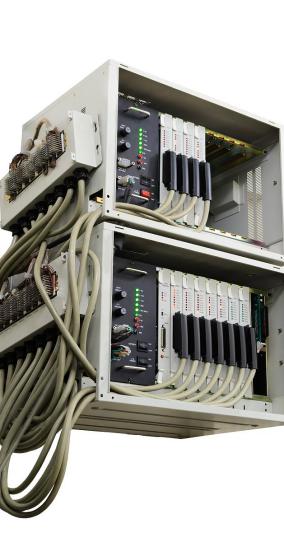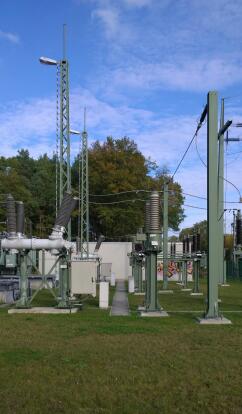Telecom base station battery is a kind of energy storage equipment dedicatedly designed to provide backup power for telecom base stations, applied to supply continuous and stable power to base station equipment when the utility power is interrupted or malfunctions, which plays a vital role in the stable operation of telecom base stations.
The telecom energy storage is characterized by high reliability, long lifespan, fast response, strong security and easy maintenance.
These features make telecom energy storage technology a major role in ensuring the continuous operation of telecom networks, and providing backup power or supplementary energy. Specifically, the application of telecom energy storage technology mainly involves telecommunication, railway, transport, military, security and other fields to ensure the normal operation and data transmission of these key systems.
In terms of technical realization, telecom energy storage systems usually adopt lead-acid batteries or lithium ion solar batteries as the energy storage medium. Despite shortcomings such as short cycle life, low energy density, susceptibility to theft, and ecologically unfriendliness, lead-acid batteries are widely applied in telecom power supplies due to their low cost, mature technology, and easy maintenance. In contrast, lithium-ion batteries without polluting metals have obvious advantages in environmental protection, and much better electrical performance than lead-acid batteries, for instance with longer cycle life, better high-temperature characteristics, and higher charge/discharge rate and energy density. These features make lithium-ion batteries a strong competitor to replace the traditional lead-acid batteries. Especially in the field of telecom backup power, lithium iron phosphate batteries and NCM batteries are enjoying ever-increasing applications.


backup power for telecom base stations outdoor telecom base statio
Core Parameters | Standard | Results |
How to determine the battery capacity
| According to the load current, voltage and standby time of the base station, including the power consumption of main equipment, transmission equipment and monitoring equipment.
| 48V50Ah,48V100Ah,48V200Ah,48V300Ah |
How to determine the battery type
| According to the environmental conditions and usage requirements of the base station. | Lead-acid batteries: cheap with a cycle life of less than 1,000 times. Lithium-ion batteries: high energy density with a cycle life of more than 3,000 times. |
How to determine the number of battery packs | According to the actual situation of the base station and the required capacity. | In order to improve the system reliability, the battery pack is usually designed fas 2-4 packs. In the case of one-pack failure, the remaining battery packs continue to supply backup power. |
The charging and discharging characteristics of the battery shall be considered.
| Charging and discharging efficiency is a major indicator of the battery performance. | Charging efficiency is generally required to be above 90% and discharge efficiency above 80%.
|
Preparation and precautions before installation
| 1)Confirm whether the specification and model of the base station battery meets the requirements. 2)Check whether the battery appearance is sound and whether the accessories are complete. 3) Prepare installation tools and materials, such as screwdrivers, spanners, insulation tape, etc. |
Installation steps and operation methods
| 1)Determine the battery’s installation location according to the layout of the base station equipment and battery size. 2)Connect the battery circuit according to the positive and negative electrodes’ markings, and use insulation tape to fix the terminals. 3)Install the battery bracket according to the bracket installation instructions. 4)Check whether the battery is firmly fixed, whether the circuit connection is correct, and whether there is any phenomenon like short circuit . |
Daily inspection, maintenance and repair
| 1)Regularly execute visual inspection, voltage measurement and internal resistance test, etc. towards the battery to ensure that it is in good condition. 2)Regularly charge and discharge the battery to prolong its service life and improve its performance. 3)When found to be faulty, the battery should be repaired or replaced by professional personnel in time. 4)Keep detailed records of battery inspection, maintenance and repair for follow-up tracking and management. |
Accompanied by the rapid promotion and application of new-generation information technologies such as IoT, 5G and cloud computing, the scale and complexity of China's telecom network keep growing. The number and scale of telecom base stations, as the core component of telecom networks, continue to expand, and the demand for telecom energy storage goes up accordingly. In 2023, the scale of China's digital economy already skyrocketed to RMB 53.9 trillion.
Due to the expansion of telecom infrastructures, deployment of 5G networks, and increased demand for reliability of power supply, the global market scale of telecom energy storage industry has grown significantly in recent years. Continued investment in emerging markets and developed countries, as well as a spotlight on green and renewable energy has also accelerated the expansion of the global telecom energy storage market. By 2023, the global newly installed capacity of telecom energy storage already increased to 37.8 GWh.
China has emerged as a major market for the telecom energy storage industry, boosted by the huge telecom infrastructure and rapid technological advancement. Driven by the government's attention on energy security and green development, the expanding construction of telecoms infrastructure and the increasing proportion of renewable energy generation, China’s newly installed capacity of telecom energy storage already ascended to 21.6 GWh by 2023.
From the perspective of technology development, EVTank expects the average annual demand for telecom base station energy storage batteries in China to stay at around 20GWh until 2030, with lithium-ion batteries accounting for more than 80% of the market share. Apparently, it reflects the dominance of lithium-ion batteries in the application of telecom base stations, but as the technology progresses, sodium-ion batteries will also occupy a part of the market share of telecom base station energy storage batteries after industrialization.
In the future, telecom base station batteries from ece energy will feature high energy density, eco-friendly and intelligence.
With the improvement of environmental awareness and promoted by the policy, the future base station battery will highly value greenness and environmental protection by using environmentally friendly materials and processed. In order to improve the endurance of the base station batteries, more attention will go to the development and implementation of high energy density batteries to reduce the impact on the environment. Against the development backdrop of the IoT, artificial intelligence and other technologies, the future base station batteries will embrace intelligent management to improve the efficiency and safety of operation and maintenance.

Install photovoltaic energy storage systems for your own home or company to save money and stabilize electricity consumption
Find a stable and reliable factory to assist you in expanding the market locally
Professional technical team and reliable energy storage products to provide a guarantee for your engineering project